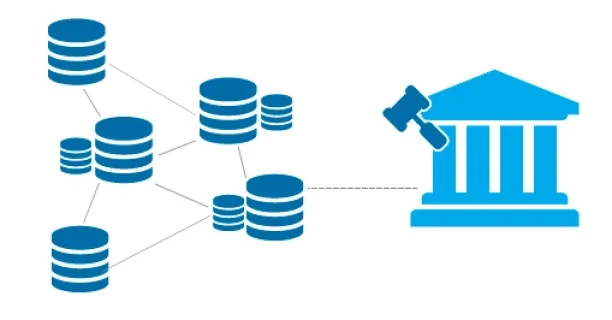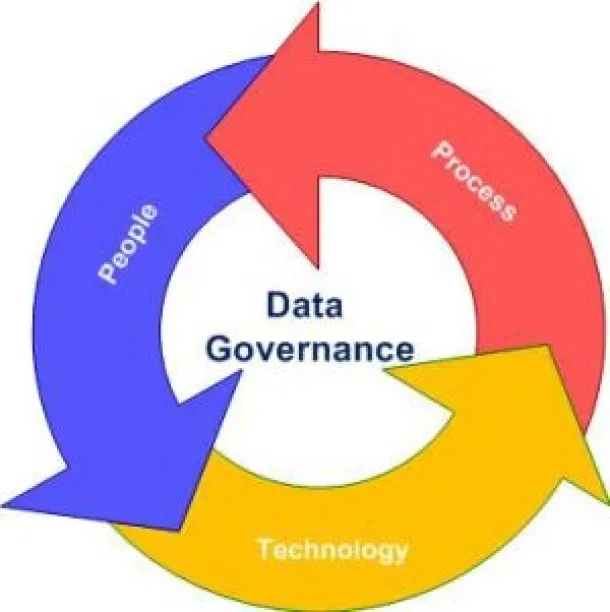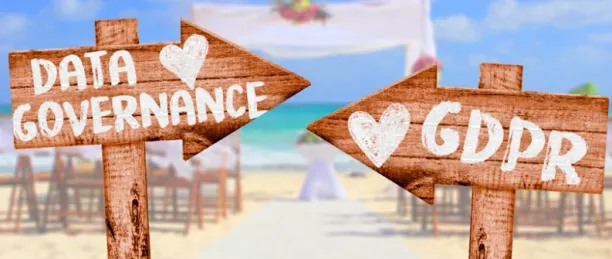What is Data Governance? Use cases, Best Practices & Tools [2024]
![What is Data Governance? Use cases, Best Practices & Tools [2024]](https://research.aimultiple.com/wp-content/uploads/2018/06/data-governance-1--382x208.png.webp)
![What is Data Governance? Use cases, Best Practices & Tools [2024]](https://research.aimultiple.com/wp-content/uploads/2018/06/data-governance-1--824x449.png.webp)
Businesses around the world are striving every day to become more data-driven, and as such, how they collect and manage this data is evolving. One important topic that has arisen out of this shift is data governance. In this post, we set out to answer the following questions:
What is Data Governance?
Data governance refers to the processes and practices concerning the formal management of data within an organization. Some related subtopics on the matter include data stewardship, insider threat management (ITM), data quality, and similar efforts that help organizations ensure the safety and proper usage of data.
It has gained relevancy and prominence in recent years with the increasing importance of big data and BI for a growing number of organizations. With accurate data governance, many complex data sources that presently contribute to decision making can be managed and monitored throughout the many layers in which they exist. This ultimately gives businesses the most unified and consistent view of data possible.
It is important to remember that data management and data governance are not the same thing. One way to remember the difference is to think of data management as an IT effort that aims to organize and control your data, whereas data governance is the business strategy that is more holistic and includes stakeholders throughout an organization.
Why is Data Governance Important?
Though data governance for many has slipped quietly under the radar, with only 48% of organizations possessing a clear plan or program [1], that does not diminish the importance of the topic. Data governance is important because it focuses on three key factors:
Data accessibility: The ability to get the right data when it is needed.
Data confidence: How confident an organization is of the quality, accuracy, and security of its data.
Data activation: The ability to act on collected data.

Image source: Global IDs
What are the Benefits of Data Governance?
Implementing effective data governance practices has a wide range of benefits for organizations. Some of the most important include:
- Ensure compliance with key internal and external data regulations, such as GDPR and similar
- Aid in the standardization of data systems, policies, procedures, and standards through clearer data understanding and data lineage
- Decreased costs related to data management
- Increased transparency for any data activities owing to lineage factors
- Increased overall revenue through lower occurrence of errors
- Improved operational efficiency owing to a better capacity to plan
- Improved data quality
As businesses work to become more data-driven, the importance of data governance will only stand to become more and more relevant.
Tasks Within a Data Governance Strategy
Data governance involves an incredible amount of decision-making, accountability, and management, so it is often necessary to build a dedicated governance team. There are a range of structural options for the strategy, but two of the most common options are: top-down command and control and also bottom up collaboration. Some common roles associated with data governance include CDO, data owners, stewards, and specialists.
These different roles will have a range of different tasks, but some of the key processes that they will work to execute include:
- Define and plan the scope of the program
- Develop ways to improve data quality and security
- Learn and find data quality tools.
- AI-powered tools can help improve data security,
- Create and manage metadata
- Data catalogs are tools that help manage metadata.
- Evaluate the suitability of new data sources
- Monitor and enforce compliance with data policies
- Data masking, privacy-enhancing technologies (PETs) and synthetic data generation can help comply with policies.
- Research and integrate new data sources
- Train and improve the data literacy of staff across an organization
- Facilitate new data-driven opportunities for improvement
The importance of different tasks relative to each other will depend on the specifics of your organization and its regulatory/compliance environment.
Best practices for Data Governance

Image source: The Data Science Community
There are a number of best practices that can be implemented in an organization to aid in data governance programs. Following them can help organizations to avoid some common challenges and pitfalls associated with data governance. These best practices include:
- Think big and start small: Effective data governance requires the participation and integration of a number of different employees/executives, processes, and technology. Subsequently, it is important to keep all of these factors in mind when developing a data governance strategy. Starting with the human factor, developing a process to suit them, and then finding the right tools and technologies can help to ensure success.
- Start with a business case: As data governance requires the input and approval of executives across an organization, it is essential to have a tangible demonstration of the benefits to be gained. Be sure to outline factors such as increased revenue, better operational efficiency, and better customer experience. By not only identifying these opportunities, but also outlining the challenges, there are no surprises and many benefits can be realized with much more ease.
- KPIs: Goals are great, but they need to be measurable. Especially when you’ve gotten executive buy-in and they’re anticipating clear and demonstrable results for their investments. KPIs and metrics are essential to tracking the progress of a program, but also for finding ways to improve it into the future.
- Stay in touch: Communication for any major business practice is integral, and data governance is no exception.
- Think of it as a shift, not an exception: Data governance is not a one-time project, but rather an ongoing effort that requires regular and ongoing adjustments and improvements. When data governance is thought of as a ‘one off’ project, it’s easy for businesses to slip back into old, ineffective practices.
These five best practices can be extremely helpful in ensuring the viability of your data governance program.
Pitfalls with Data Governance
Data governance, as with any other major data practice, is not without its own pitfalls. A few of the most common ones include:
Hyper-focusing on IT: Though often those in technology disciplines are the first to recognize the need for governance, they are neither the creators nor the users of the data.
SOLUTION: Keep the majority of data governance efforts on the ‘business’ side and integrate IT as an active partner
Assuming the value of data is understood: Not everyone within an organization is aware of the value of data and subsequently of the value of ensuring its quality. This generally occurs not because people are willfully ignorant, but rather because they have had the benefit of only receiving the clean data instead of having to work with the resources necessary to achieve it.
SOLUTION: Communicate the value of clean data and how important it is to becoming a better business from within.
Choosing the wrong metrics: It’s tempting to pick an easy and straightforward metric that may ultimately sound great, but not actually mean anything (ie: we reduced errors by 20% sounds great, but doesn’t really tell us how that is impactful on business activities). Instead, choose metrics that demonstrate how improvements to data and governance are helping people to achieve their goals.
SOLUTION: Connect different metrics that demonstrate both progress and impact across an entire company.
Data silos: Silos are painful for any part of a business, but with data governance in particular. This is because while data may meet governance needs for one department or use, it may fall short for another. This leads to inconsistent data and even more problems down the line.
SOLUTION: Make data governance a change in culture and mindset and include all departments in the planning and creation of data governance strategies.
Data Governance Tools
Data governance tools are designed to help ensure that data delivers the anticipated business value. This means that when it comes time to choose a data governance tool, be sure to remain clear on not only the capabilities that a tool possesses but also how these functionalities will deliver business value.
There are several functional areas that should be considered while evaluating potential tools.
- The management of information and data artifacts: To achieve data consistency, governance programs must manage essential data, such as elements, models, and glossaries. Specifically, the tool should have the capacity to:
- Classification of data based on use or relevance
- Management of relationships between data elements via hierarchies or taxonomies
- Versioning capabilities: Having specific version information is key to the effective monitoring updates and restoring earlier versions when necessary. This means:
- Source code control service systems that include branching and merging
- Historical reports: These should demonstrate any modifications and the sources of these modifications; including metadata.
- Rollback capabilities: A running application should be able to return to the most recent state with the transaction name ‘ROLLBACK’ in the case that the execution process fails.
- Metadata management: Data governance and metadata are inseparable because without proper metadata, master data lacks essential context.
The following are several common tools available in the data governance market today.
Note: They are ranked by number of employees.
| Name | Founded | Status | Number of Employees |
|---|---|---|---|
| SAS Data Governance | 1976 | Private | 10,001+ |
| IBM Infosphere Information Governance Catalog | 1911 | Public | 10,001+ |
| Informatica | 1993 | Public | ~6,000 |
| Cloudera Enterprise 5.10 | 2008 | Public | 1,001-5,000 |
| Infogix Data Governance Suite | 1982 | Private | 201-500 |
| Collibra | 2008 | Private | 201-500 |
| DATUM IVM | 2001 | Private | 201-500 |
| Global IDs | 2001 | Private | 201-500 |
| Erwin Data Governance | 2016 | Private | 51-200 |
| Alation | 2012 | Private | 51-200 |
| Alex Solutions ALEX 2.23 | 2016 | Private | 11-50 |
Data Governance & GDPR

Image source: Collibra
Data governance was once emphasized as essential for those in industries with regulatory compliance, as is the case with finance and insurance. Today, this emphasis has shifted to a much wider range of industries, particularly in Europe with the recent implementation of the new GDPR (general data protection regulation).
Data governance can be integral in achieving compliance because it can help organizations to be able to clearly answer the following questions:
- What data do we collect and hold for our customers and employees?
- Where do we get this data from?
- What controls do we have in place to ensure its security?
- Who owns or manages the data internally?
- What happens in the case of a breach?
- How can we communicate our privacy information?
- What is the legal basis for carrying out your data practices?
- How are you managing minors and their guardians?
The traceability and clarity provided in organization-wide, and well-executed data governance can simplify and streamline this process, internally and also externally in the case of an audit.
In an era so heavily dependent on data, oftentimes of a sensitive nature, the importance of data governance cannot be understated. As data continues to become more complex, organizations are likely to be in search of more and better ways to ensure that it remains compliant and internal efforts effective.
Data governance is just one part a greater data strategy to ensure that it is used effectively and correctly within an organization. If you’re interested in finding out more about related topics, such as data cleaning, knowledge management, and similar, be sure to take a look at our blog’s data section.
Also, don’t forget to check our sortable/filterable list of data governance software vendors.
[1] https://www.firstsanfranciscopartners.com/blog/data-governance-survey-results/

Cem has been the principal analyst at AIMultiple since 2017. AIMultiple informs hundreds of thousands of businesses (as per similarWeb) including 60% of Fortune 500 every month.
Cem's work has been cited by leading global publications including Business Insider, Forbes, Washington Post, global firms like Deloitte, HPE, NGOs like World Economic Forum and supranational organizations like European Commission. You can see more reputable companies and media that referenced AIMultiple.
Throughout his career, Cem served as a tech consultant, tech buyer and tech entrepreneur. He advised businesses on their enterprise software, automation, cloud, AI / ML and other technology related decisions at McKinsey & Company and Altman Solon for more than a decade. He also published a McKinsey report on digitalization.
He led technology strategy and procurement of a telco while reporting to the CEO. He has also led commercial growth of deep tech company Hypatos that reached a 7 digit annual recurring revenue and a 9 digit valuation from 0 within 2 years. Cem's work in Hypatos was covered by leading technology publications like TechCrunch and Business Insider.
Cem regularly speaks at international technology conferences. He graduated from Bogazici University as a computer engineer and holds an MBA from Columbia Business School.
To stay up-to-date on B2B tech & accelerate your enterprise:
Follow onNext to Read
Guide To Machine Learning Data Governance in 2024
7 Key Data Fabric Use Cases in 2024
By not including market leader Informatica in your table, it’s a blind spot at best. At worse, ignorance of the leading vendor which questions credibility.
Hi, Nathan. Thanks for pointing it out. It was an honest “mistake.”
Thanks for sharing such a comprehensive post about data governance in 2019.
Comments
Your email address will not be published. All fields are required.